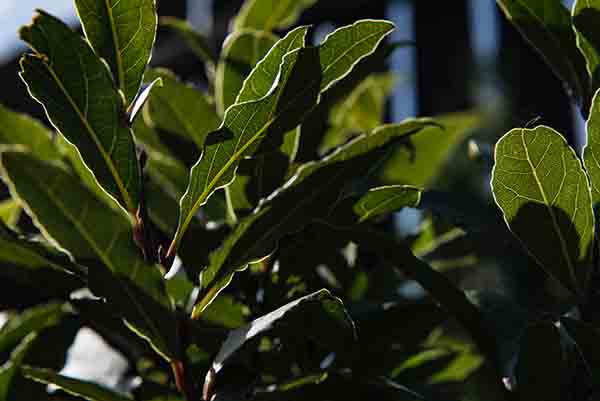Bay leaves are the name for the aromatic leaves of the bay laurel, a tree native to the Mediterranean. The leaves can be used in cooking or craft projects. Bay leaf is called hojas de laurel in Spanish.
See also: 12 Unknown health benefits of bay leaves
Bay leaves have been used since ancient times, and they’re still a popular addition to soups, stews and sauces today. They’re also used in perfumes and perfumed candles because they give off an aroma similar to rosemary or sage when burned. Bay leaves have been scientifically studied for their health benefits as well; some studies show that consuming bay leaves can help reduce high blood sugar levels while others suggest it may help lower cholesterol levels in people who are overweight or obese. Others find that ingesting bay leaf extract helps prevent food allergies through its anti-inflammatory properties within gastrointestinal tissue due to its astringent qualities (i.e., it tightens intestinal linings).
Scientific studies show that bay leaves can help reduce high blood sugar and cholesterol levels.
Bay leaves are a great addition to your diet, as they can help with blood sugar and cholesterol levels. Here’s what you need to know:
- Bay leaves are high in potassium, which helps control blood pressure and reduces the risk of heart disease.
- They contain flavonoids (plant compounds) that may lower your cholesterol levels by improving circulation throughout your body, including the arteries that feed our brains (and help us think).
People with allergies to plants such as avocado, cinnamon and birch should avoid consuming bay leaves because of a possible reaction.
Bay leaves are a popular seasoning for soups and stews, but those who have allergies to plants such as avocado, cinnamon and birch should avoid consuming bay leaves because of a possible reaction.
People with asthma or digestive problems may also want to steer clear of the leafy green since it could cause an allergic reaction. People with high blood pressure may want to avoid eating bay leaves because they can increase their heart rate too much. If you have heart disease or high cholesterol levels in your body, then taking in large amounts of this herb could put stress on your system over time if left unchecked by proper monitoring by medical professionals practising preventative medicine first before attempting any treatment options available on the market today (such as prescription medications).
Bay leaves are approximately two to three inches long and one inch wide, with glossy green colour and a tapered end. The most common type of bay leaf is the Turkish variety, or Laurus nobilis, which has an earthy scent when fresh and a spice-like aroma when dried.
Bay leaves are the leaves of a laurel tree. They can be used in cooking and crafting projects, as well as being used to flavour food.
Bay leaves have been used for centuries by food lovers to add flavour to their dishes. The most common type of bay leaf is the Turkish variety or Laurus nobilis; this species has an earthy scent when fresh but becomes spicier when dried out. In addition to its culinary uses, bay leaves have many other practical applications: they help reduce blood sugar levels and cholesterol levels in people who suffer from diabetes or high blood pressure; they also help lower inflammation caused by injury or illness; they have antibacterial properties (making them great for sanitizing surfaces)
These leaves are good for food and medicine.
Bay leaves are flavouring and can also be used in cooking. They are also used in medicine, but not just for the flavour of food. Bay leaves have been shown to treat high blood sugar and cholesterol levels by lowering the level of insulin resistance in the body.
When you eat bay leaves (or smell them), you’re getting some of the benefits of this herb without having to go through all that preparation time!
Conclusion
Bay leaves are a popular ingredient in food and medicine. They can be used to flavour soups, stews and other dishes, or they can be sprayed on meats before roasting them at high temperatures. They have also been used for centuries as an antiseptic and are now being studied for their potential benefits in treating wounds or burns. Bay leaves are sometimes sold individually, but most people prefer purchasing them whole because they make better gifts when given out as favours at parties!

Leave a Reply